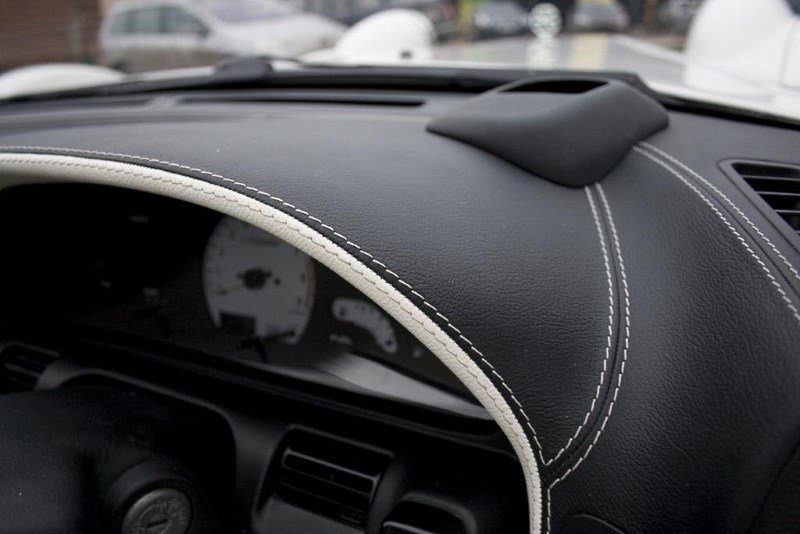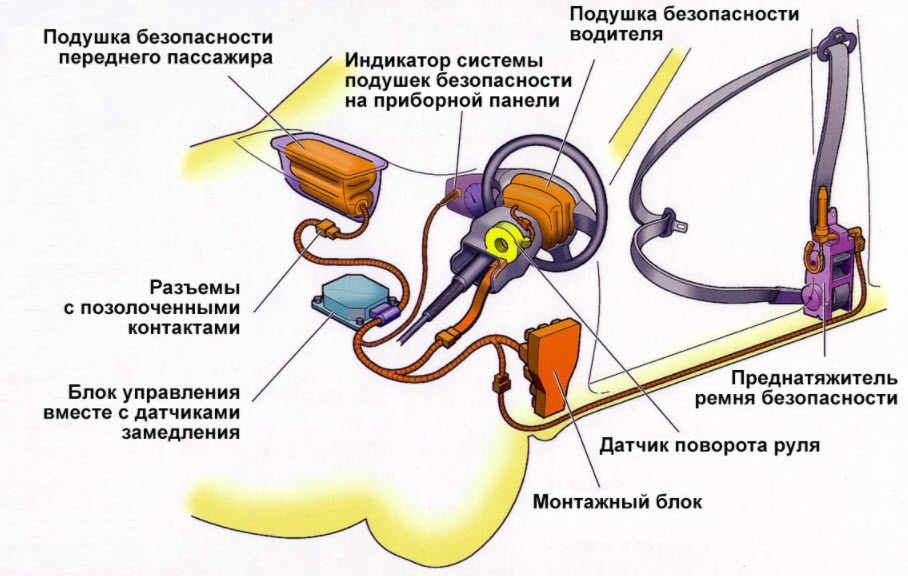
Why do you need airbags in a car: the principle of operation, types and conditions of operation
Content
Airbags are one of the main attributes of a modern car. It's hard to believe, but 40 years ago, none of the industry leaders even thought to install them, and now the SRS system (off. Name) must be in all manufactured cars. At least without them, the manufacturer cannot see the NHTSA certificate.
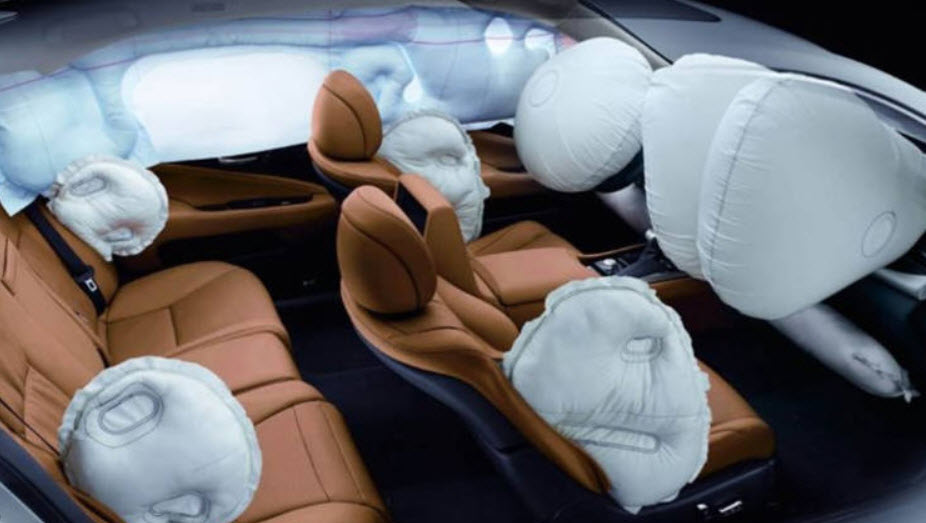
Many motorists also understand that this device can save their lives and opt for safer models.
So before buying, it is important to be interested in how many airbags are included in the package, and in order to be savvy in this matter, we suggest that you familiarize yourself not only with the dry theory of the airbag device, but also with their types, installation locations, possible malfunctions and even service life (relevant for buying a used car).
When and how did airbags appear
For the first time, they thought about creating pillows back in the 40s, though not for motorists, but for military pilots. But things did not go beyond patents. In the late 60s, Ford and Crysler also began to work in this direction, but with one flaw - airbags were perceived as an alternative to seat belts.
GM soon put an end to this issue, releasing 10 cars equipped with airbags. Statistics showed only 000 deaths (and then one from a heart attack). Only then did the NHTSA perceive this as a promising direction and passed a law on the mandatory presence of Airbags in every car.

And since the American market was then the largest, European and Japanese manufacturers quickly adjusted and soon began to roll out their own developments in this direction.
The story ends in 1981. Mercedes-Benz releases the W126, where the airbags were paired with belt tensioners. This solution allowed leveling up to 90% of the impact force. Unfortunately, the best result has not yet been achieved.
Устройство
Before we understand how airbags work, let's take a short tour of the main elements of the SRS system, since the airbag itself is not everything.
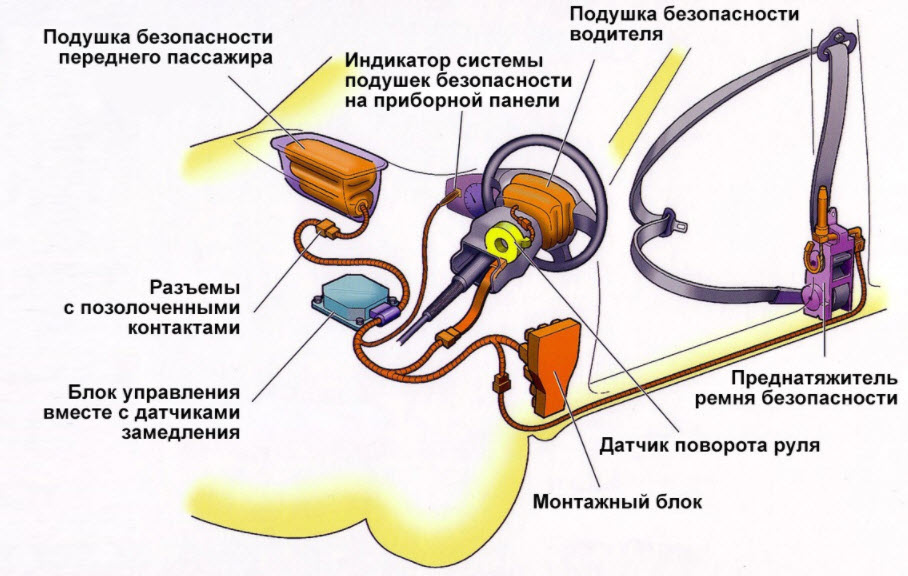
What we have:
- Impact sensors. They are installed in front, on the sides and behind the body. Their task is to fix the moment of collision and quickly transmit information to the ECU;
- Gas generator or pressurization system. It consists of two squibs. The first provides 80% of the gas filling the pillow, and the second 20%. The latter only fires in severe collisions;
- Bag (pillow). This is the same white fabric, or rather a nylon shell. The material withstands huge short-term loads and is very light, due to which it quickly opens under gas pressure.
The system also includes a passenger seat sensor so that at the time of the collision the system knows whether it is necessary to release the passenger airbag or there is no one there.
Plus, sometimes the accelerometer is included in the SRS, which determines the coup of the car.
The principle of operation of modern Airbag
Due to its thickness and softness, in conjunction with the straps, the pillow performs three functions:
- does not allow a person to hit his head on the steering wheel or dashboard;
- dampens the inertial velocity of the body;
- saves from internal injuries caused by sudden deceleration.
The last one is worth focusing on. In collisions at high speeds, the inertial force is such that the internal organs hit the bones, which causes them to rupture and bleed. For example, such a blow of the brain to the skull is often fatal.
How the SRS system works can already be guessed from the device, nevertheless it is worth repeating:
- During an accident, the impact sensor detects the collision and transmits it to the ECU.
- The ECU commands the gas generator.
- The squib pump flies out and gas under pressure is fed into a metal filter, where it cools to the desired temperatures.
- From the filter, it enters the bag.
- Under the influence of gas, the bag sharply increases in size, breaks through the skin of the car and inflates to the specified size.
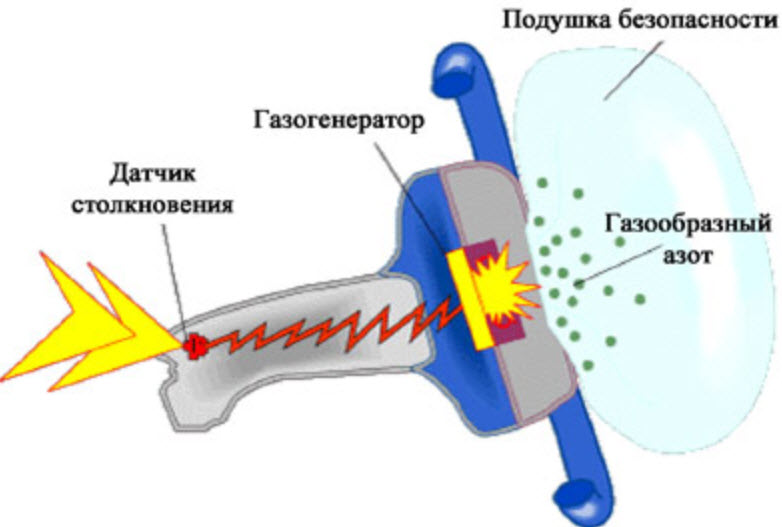
All this happens in 0.3 seconds. This time is enough to "catch" a person.
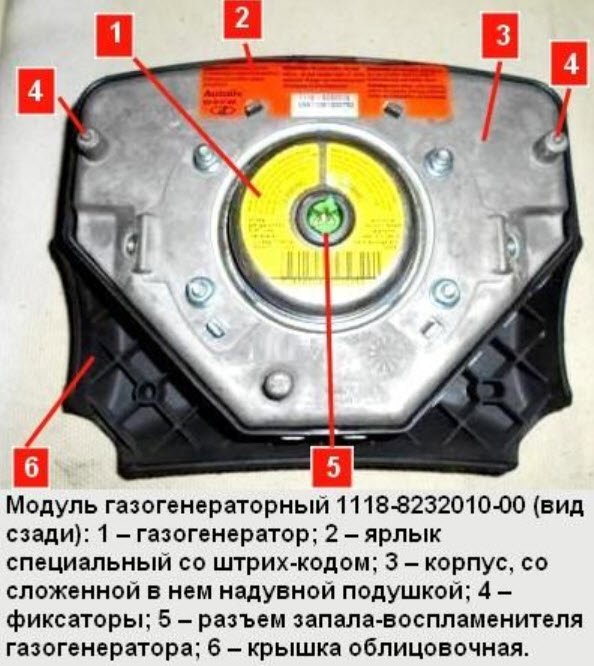
By the way, that is why the car body should be deformed by an accordion. So it not only extinguishes inertia, but also gives the SRS system time to save a person from serious injury.

Once triggered, the airbag will deflate completely within a couple of minutes to allow access for rescue services or to allow the driver to leave the vehicle on their own.
Types and types of airbags
After 1981, the development of pillows did not end. Now, depending on the class of car, manufacturers can offer different layouts of the SRS system that minimize injuries in different types of accidents.
The following versions can be distinguished:
Frontal
The most common type, found even in the most budget cars. As the name implies, they protect the driver and front passenger in a frontal collision.
The main task of these pillows is to soften inertia so that passengers do not hit the dashboard and steering wheel. They may vary in size depending on the distance between the torpedo and the front seats.
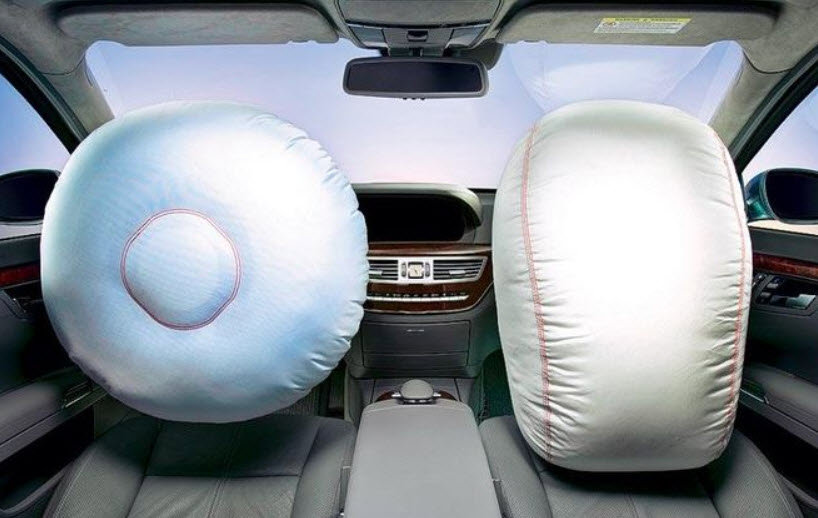
By themselves, they will not open, even if they are accidentally hit. But there are certain safety precautions. For example, a passenger should not hold luggage in his hands, and when installing a child seat, you need to deactivate the passenger airbag with a specially provided button.
Central
This view appeared a few years ago, and no, the pillow is not located on the center console, but between the front seats. Thus, it serves as an elastic barrier between driver and passenger.
Activation occurs only in a side impact, and the main task of this airbag is to prevent the driver and passenger from hitting their heads against each other.
By the way, during the test, it turned out that this pillow also minimizes injuries during a car overturn on the roof. But they are installed only on premium cars.
Lateral
These airbags are activated in a side impact and protect the driver and passengers from injury to the shoulders, pelvis and torso. They are not as big as the front ones, but, judging by the results of crash tests, they are able to absorb up to 70% of the impact force.
Unfortunately, this type of pillow is not found on budget category cars, since the technology provides for complex installation in racks or seatbacks.
Curtains (head)
Curtains, or as they are also called - head pillows, are also designed to protect road users from injuries and glass fragments during a side impact. They are placed along the window frame and pillars, thereby primarily protecting the head. Found only on premium cars.
Knee
Given that the front airbags only protect the head and torso of the driver and front passenger, the majority of injuries were to the legs. This was especially true for the knees. Therefore, manufacturers have provided a separate pillow in this area. They work simultaneously with the front airbags.
The only thing, in the presence of this type of airbag, the driver must monitor the distance between the knees and the torpedo. It must always be greater than 10 cm. Otherwise, the effectiveness of such protection will be low.

Location in the car
To determine where and what pillows are in the car, it is not at all necessary to open the technical documentation. The regulations oblige manufacturers to mark their locations with an engraving or a tag.
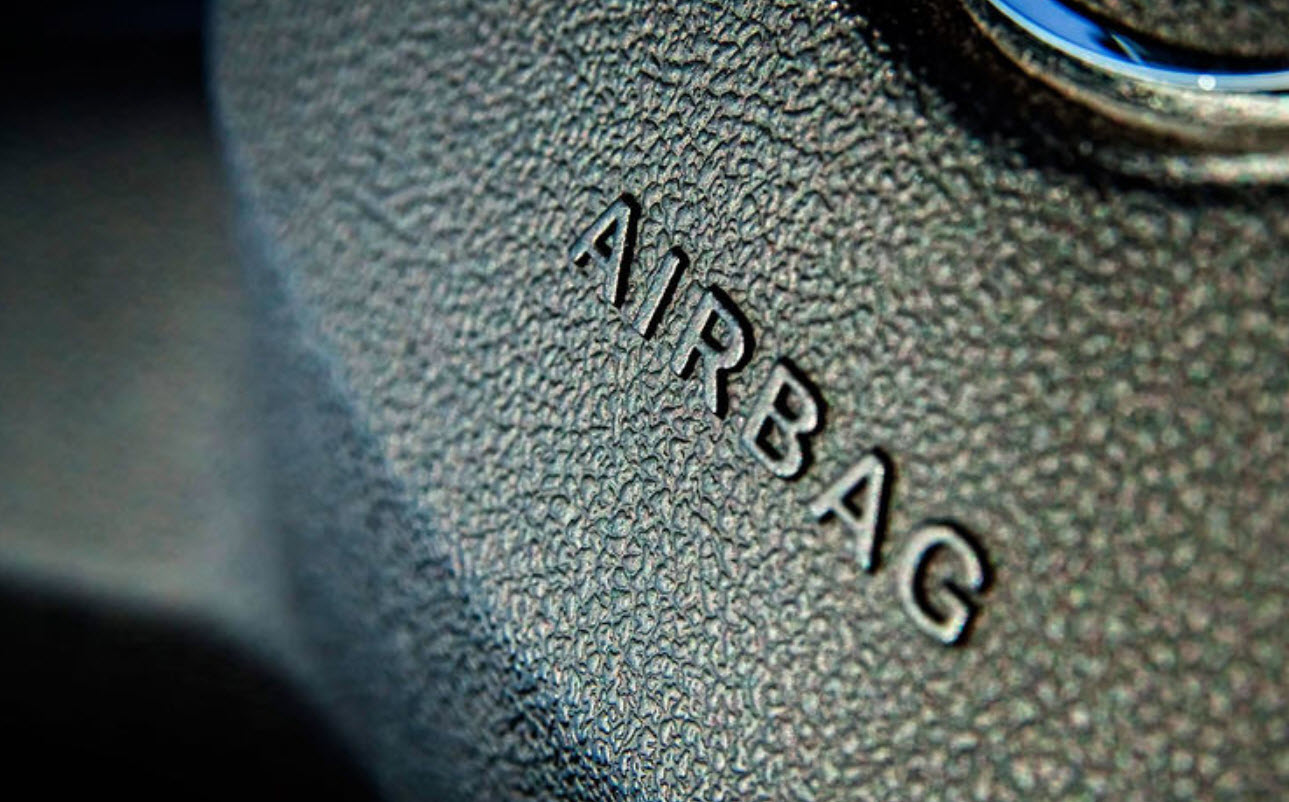
So, you can find out if certain airbags are in your car as follows:
- Front ones are indicated by engraving on the central part of the steering wheel and on the shield above the glove compartment;
- The knees are marked in the same way. The engraving can be found under the steering column and under the glove box section;
- Side cushions and curtains give themselves a tag. True, you will have to look for it carefully, as manufacturers like to hide them for the sake of aesthetics.
By the way, when buying a used car, you should not focus only on the designations. Pillows are disposable, and the car could already have been in an accident. Therefore, it is better to look at the trim next to the airbag designations. If there are cracks, holes, or traces of repair on the skin, most likely the pillows are no longer there.
Under what conditions does the protection system work?
It is also worth pointing out the following point - pillows do not work just like that. Therefore, when you are driving, they will never fly into your face for no reason. Moreover, even in case of an accident at a speed of up to 20 km, the sensor will not give a signal to release the airbags, since the inertia force is still too small.
Separately, it is worth noting cases when the car owner decides to repair the interior trim at the location of the pillows. To prevent accidental opening and subsequent injury, you should remove the terminals from the battery, and only then take up repairs.
Malfunctions
Like all on-board systems, pillows are tied to the computer and are diagnosed by the on-board network. If there is a malfunction, the driver will know about it by a flashing icon on the dashboard.
Faults may include:
- Error or failure of the system;
- Incorrect connection of the Airbag;
- Oxidation of wires or contacts (common after washing);
- Failure of the shock sensor;
- No signal from the control unit, belts, pillows or sensor;
- Fuse failures (the contact may have gone off);
- Incorrect installation of new pillows or steering wheel.
In case of any malfunctions, please contact the service. Since it will be possible to independently find out the real technical condition of the pillows only at the time of the accident, which is fraught with sad consequences.
It is also worth bearing in mind that when buying an old car (from 15 years old), the pillows will have to be changed unambiguously, since the charge of the cartridge has already “exhausted” over the years. Today, the replacement of only one pillow costs from 10 rubles. If safety is a priority, it might be worth looking for a younger car.
